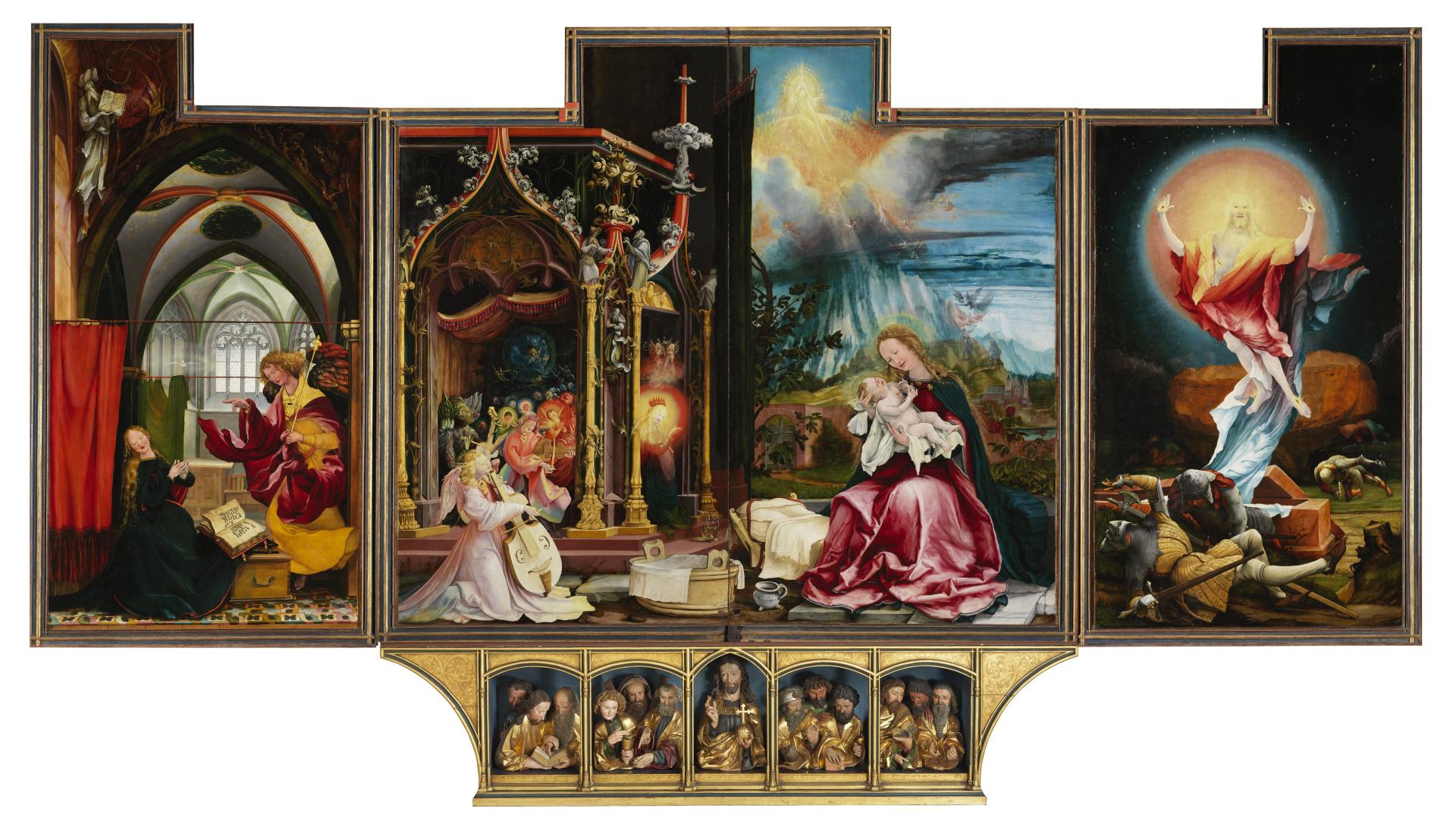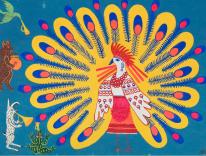Walter Benjamin was obsessed with images. The philosopher, essayist, and critic was drawn to them as possibilities for insight beyond discursive reasoning, by their specificity and materiality, and by their power to slip free from the intentions of their creators. He was taken in particular by the power of images to enter into unruly, productive relationships with texts. In his literary criticism and political theory, he explored how criticism and theory can overcome aporias and dead ends by substituting juxtapositions—or what Benjamin called “constellations”—of images and texts for more familiar methods of exposition and argument.
This fascination with image-based thinking led him to the intersection between theology and materialism and to deep engagements with sources as varied as baroque allegories and rebuses, the earliest years of portrait photography and advertising, the advent of cinema and the technological transformation of seeing, and Surrealist montage. His work returned again and again to the revelatory moment where the combination of image and text generates insight transcending the limits of subjective intention, whether of images’ creators, their consumers, or the theorist trying to interpret them.
Benjamin hoped that this new, image-based method of theorizing would culminate in his Arcades Project. Centered around the glass-encased shopping arcades of nineteenth-century Paris, the book was to excavate and expose the origins of a new urban material culture in commodities, literature, architecture, and modes of experience. It would have consisted largely, perhaps entirely, of constructed juxtapositions of images and captions. The center of this method was the “dialectical image,” a constellation of otherwise scattered visual and textual fragments so precisely constructed that a kind of abrupt, intuitive truth would be released, obviating the need for theoretical interpretation entirely, disclosing otherwise masked truths about the “dream time” of modern capitalist culture. The project was never completed: it ended in 1940 when Benjamin, in flight from Nazi-occupied Paris, committed suicide after being denied entry into Spain.
Benjamin appears to have understood his own peculiar, hard, and abbreviated life more in imagistic than narrative terms as well, returning again and again to a deeply private store of images to make sense of his experiences. At times, these highly personal, idiosyncratic attachments to particular images cross over into his published work. Of all the images that Benjamin saturated with both personal and theoretical significance, none rivals Paul Klee’s small, early oil transfer and watercolor Angelus Novus of 1920, which Benjamin purchased for a modest 1,000 marks ($14) in Berlin in 1921.
The unsettling angel, humanoid but clearly not human, with its scroll-like hair, claws, and unreadable expression, was Benjamin’s prized possession, following him throughout his itinerant life. From the first, Benjamin insisted on endowing the little picture of the “new angel” with all manner of personal and theological meaning, sometimes playful, often portentous. The painting was to provide the title for a journal of the arts, which Benjamin attempted but failed to found in the 1920s. With a face both unnerving and endearing, threatening and vulnerable, the little picture made regular appearances as a stand-in for various personalities in Benjamin’s correspondence and writing. The angel was made to comment on his internal states and complicated relationships, the decaying historical conditions in Weimar-era Germany and France, and, ultimately, how the personal and historical intersected.
Most famously, the “new angel” makes its appearance in the posthumous “Theses on the Philosophy of History,” which Benjamin wrote shortly before his death:
There is a painting by Klee called Angelus Novus. An angel is depicted there who looks as though he were about to distance himself from something which he is staring at. His eyes are opened wide, his mouth stands open and his wings are outstretched. The Angel of History must look just so. His face is turned towards the past. Where we see the appearance of a chain of events, he sees one single catastrophe, which unceasingly piles rubble on top of rubble and hurls it before his feet. He would like to pause for a moment so fair, to awaken the dead and to piece together what has been smashed. But a storm is blowing from Paradise, it has caught itself up in his wings and is so strong that the Angel can no longer close them. The storm drives him irresistibly into the future, to which his back is turned, while the rubble-heap before him grows sky-high. That which we call progress, is this storm.
Surviving this storm in the 1940s, the painting went on to live an even more itinerant life than its owner. Following Benjamin’s death, the French writer Georges Bataille sent the painting, along with manuscripts Benjamin had left with him for safekeeping in Paris, to Theodor W. Adorno, who in turn eventually gave it to Benjamin’s old friend Gershom Scholem, in Jerusalem. Following Scholem’s death decades later, Angelus Novus was bequeathed to the Israel Museum in Jerusalem, where it hangs today. In the decades following Benjamin’s elevation to posthumous fame, Klee’s work has become iconic—a word hard to avoid in this context, and apt, given the surfeit of biographical, theological, theoretical, and aesthetic attention, citation, imitation, transposition, interpretation, and inspiration that the work has inspired over the past thirty years.
The story, or stories, of Benjamin’s tangled relation to Klee’s little painting, has in turn also become a familiar topic in the enormous scholarly literature on Benjamin and his work. Virtually all of this literature focuses on the final act of this story, the transformation of the Angelus Novus into the Angel of History in Benjamin’s last months. But almost none of this literature takes a serious look at the materiality, the quiddity of the picture itself. This neglect is odd, given Benjamin’s own preoccupation with the relationship between materiality and theoretical abstraction.
Annie Bourneuf’s Behind the Angel of History helps correct this deficit. However, her version of this story may make for the strangest telling of all—one that ought to encourage even more reflection on Benjamin’s angel. An art historian specializing in Klee, Bourneuf drew the inspiration for the book from the American artist R.H. Quaytman, who traveled to Jerusalem in 2013 to exhibit her work. While there and looking at the now-famous Klee, Quaytman noticed something that generations of theorists had, presumably, missed: the narrow band of black border paper surrounding the painting was made by a black sheet glued between the artwork and its backing. On the border, Quaytman made out faint initials and a partial date in one corner. A swirling shape visible through the painting seemed to suggest a figure in a dark robe hiding behind the angel. The black interleaf, inserted face-up, must carry its own image.
Quaytman’s curiosity about these barely legible ciphers gradually turned into something of an obsession. She subsequently spent years, with the apparently grudging permission of the Israel Museum, subjecting Angelus Novus to a series of exploratory tests to try to discover just what image the interleaf might contain. (The museum did not permit more intrusive, and potentially conclusive, testing.)

Eventually Quaytman (who was by now in regular correspondence with Bourneuf) arrived at her aha moment. Digitally superimposing candidate image after image on a reproduction of the watercolor, she stumbled on what she concluded was a perfect match: the faint initials “LC” stood for Lucas Cranach, and the faint numbers for a date in the 1520s. The fragment of faint image was a swirl in the robes of Martin Luther. The black interleaf, Quaytman concluded, was an 1838 reproduction of Cranach’s famous portrait by one Friedrich Müller, engraver of Dresden. It was a fairly ubiquitous devotional product that would have been easy enough for Klee to come by in twentieth-century Munich.
Why would the irreligious Paul Klee glue a century-old reproduction of a famous sixteenth-century engraving of Martin Luther (Bible in hand, eyes turned piously heavenward) behind a picture entitled Angelus Novus? What could the hidden superimposition mean?
Quaytman took these questions, not surprisingly, as artistic challenges. In a series of her own artworks following her discovery, she experimented with Angelus Novus and its under-print, re-interpreting the Klee with its new material boundaries and exposed secrets, combining it with borrowed snippets of Mueller’s Luther reproduction, messing with the materiality of the hidden, the exposed, and the virtual. Bourneuf reproduces one such work in which Quaytman reproduced the Angelus Novus then “covered up almost all of her own remake of Klee’s angel with a thick, tumorous blob of foam, bulging in profile and surrounded by a border…of closely spaced black and white zigzags” along with “pink and yellow-green fluorescent paint along the top beveled edge of the plywood support.”
For an art historian, as opposed to an artist, there are any number of ways of approaching the question of the meaning of the interleaf, though it’s tempting to reduce them to two possibilities, or perhaps two ends of a spectrum. A more parsimonious approach would restrict itself to what art-historical analysis can confidently assert, on evidence, about why precisely there is a picture of Martin Luther underneath Paul Klee’s Angelus Novus. Absent further archival documentation, we can only speculate on why Klee would have constructed the work the way he did, and such speculation should be modest. Klee liked to glue black paper on the back of his works to make a thin border and did it often; he had a good piece of black paper on hand. But then why glue this one sheet to just reveal the minimal information required to solve the riddle (eventually) of Luther lurking behind the Angel? The cautious art historian might suggest that perhaps he forgot to turn the paper around, or that the print side was more suitable to him for some other reason, or perhaps even that he liked the way the faint ciphers on the edge of the border looked. Benjamin did not notice this, nor had anyone else in the half-century since his death. End of story. Muller’s mass-produced copy of Cranach’s Luther portrait backing the Angelus is a mere scrap of paper. (This seems, in any event, to have been the view of the curators at the Israel Museum.)
Then there is a wilder approach. This would plunge headlong into a process of meaning discovery, or better, a dialectical back-and-forth of meaning discovery and meaning creation: reveling in the hidden connections, parallels, allusions, correspondences, coincidences, and converging backstories that can be conjured from such a strange material detail. How does the Jewish Angel of History look if we now know that the anti-Semitic Luther’s eyes are sub-imposed nearly exactly beneath its own? What changes does the under-image demand in the status of the iconic artwork, upsetting and complicating its settled narrative? Where can the string of unexpected associations lead? What other images insist on inclusion in this new constellation?
This is the path that Behind the Angel of History takes. Bourneuf begins with a careful reconstruction of the process of Quaytman’s discovery, investigation, and the artworks that they inspired. But the second two of the book’s three chapters offer the reader a full-on, raucously Benjaminian conjuring of signification. It reconstructs the world from which Angelus Novus arose: Klee’s Munich in 1920. “[L]ittle suggests that Klee had strong feelings about Luther in any direction,” Bourneuf acknowledges. But an evocation of Klee’s world—the situation of painting and the art industry in the years immediately following war and the failed Munich revolution—launches a different story about the indirect influences of Christian theology. Bourneuf painstakingly reconstructs the range of possible graphic influences for Klee’s angel, landing squarely on the Resurrection panel of Mathias Grünewald’s 1515 Isenheim Altarpiece, which was on exhibition at the Alte Pinakothek in Munich and which Klee surely saw.

For Bourneuf, multiple, tangling lines of connection link the exhibition of the altarpiece to the first years of artistic postmodernism. Bourneuf guides the reader through a discussion of postmodernism’s tendency toward citation and parody; the political functions both of religion and art in a still-volatile Munich; and Klee’s emerging self-understanding as a graphic artist willing to cite, quote, reference, or parody iconic religious artworks in a “quiet version of vanguard vandalism.” Far from a mere scrap of paper, what if, as Bourneuf suggests, “[t]he Luther portrait Klee used might be seen not only as referring to [the] putative death of art but also as exemplifying what religious images are like afterwards—instrumentalized, dull, and dry. It follows that Klee’s defacement [of the Isenheim Resurrection panel] may be far indeed from an antiart gesture.”
Here too Bourneuf argues that Benjamin—who knew the Isenheim Altarpiece well and had a reproduction on his Berlin study wall—was also aware of Klee’s complex play of recuperating and parodying Grünewald’s Christ, and that this awareness deepened and complicated Benjamin’s own decision to name his never-realized journal of German-Jewish letters Angelus Novus. The third chapter reconstructs the berlinisch world of German-Jewish letters and politics in the immediate postwar years, referencing the New Angel as a touchstone not only for Benjamin’s frustrated ambitions as a literary editor but for the complex position he was developing in debates over German-Jewish relations, religiosity, theology, and politics.
This reconstruction at times takes us very far afield, with extensive discussions of Benjamin’s contemporary (and frenemy) Martin Buber’s reflections on Judaism and Christianity, many of which return back to the iconography of the Isenheim Altarpiece (an image that, in some ways, plays a more central role in the book than Klee’s little painting). Some readers may find this complex intellectual history, rich as it is, a bit hard to connect to the book’s earlier chapters. They would have my sympathy.
Behind the Angel of History weaves a fascinating, multi-strand tapestry, a web of associations, filiations, and unexpected connections. The richness of the “backstories” that Bourneuf sees intertwined through a sheet of black paper is nothing short of astonishing, and the glimpses into Klee’s and Benjamin’s worlds transform that hidden black sheet into an unexpected portal. The presentation’s deliberately non-linear structure is the book’s major strength: rather than a red thread of argumentation, the book moves in leaps and arabesques, iterations of unstably superimposed images (Klee’s angel and Grünewald’s ascending Christ, Quaytman’s hyper-conscious recuperations), concepts (the fate of the artwork in modernity; the irreducible, polysemous nature of image-making and reception) and characters (Benjamin of course, but also Buber, Ernst Bloch, Luther, and Cranach). It is a wild ride.
Is it at times too wild? Argument and suggestion, evidence and opportunity, can often be false friends. In many places Bourneuf shows a disconcerting tendency to introduce an appropriately modest, hedged, subjunctive hypothesis about influence, or subjective intention, or historical connection in one place, only to repeat it as an established fact a few pages later. Thus, the possibility that Klee saw Angelus Novus as a subtle but powerful parodic citation of the Resurrection panel of the Isenheim Altarpiece hardens into fact, as does the notion that Benjamin himself saw his painting this way, and based his own views on the aesthetic dimension of German-Jewish religiosity on it. So too Bourneuf’s speculation that Klee may have intended the interleaf portrait of Luther behind the angel as a clue to solve a (largely unclarified) aesthetic-historical-political riddle: “While Klee didn’t intend us to know who lay behind [Angelus Novus], I think he would expect us to guess.” Absent more evidence, it’s not clear why Bourneuf thinks this—though it would be a far duller book were the interleaf merely a handy scrap of paper. Make of it what you will.
Behind the Angel of History
The “Angelus Novus” and Its Interleaf
Annie Bourneuf
The University of Chicago Press
$35 | 176 pp.
Please email comments to [email protected] and join the conversation on our Facebook page.
Previous Story
Pope Francis’s Vision for the Church
Next Story
Enlightenment How?

